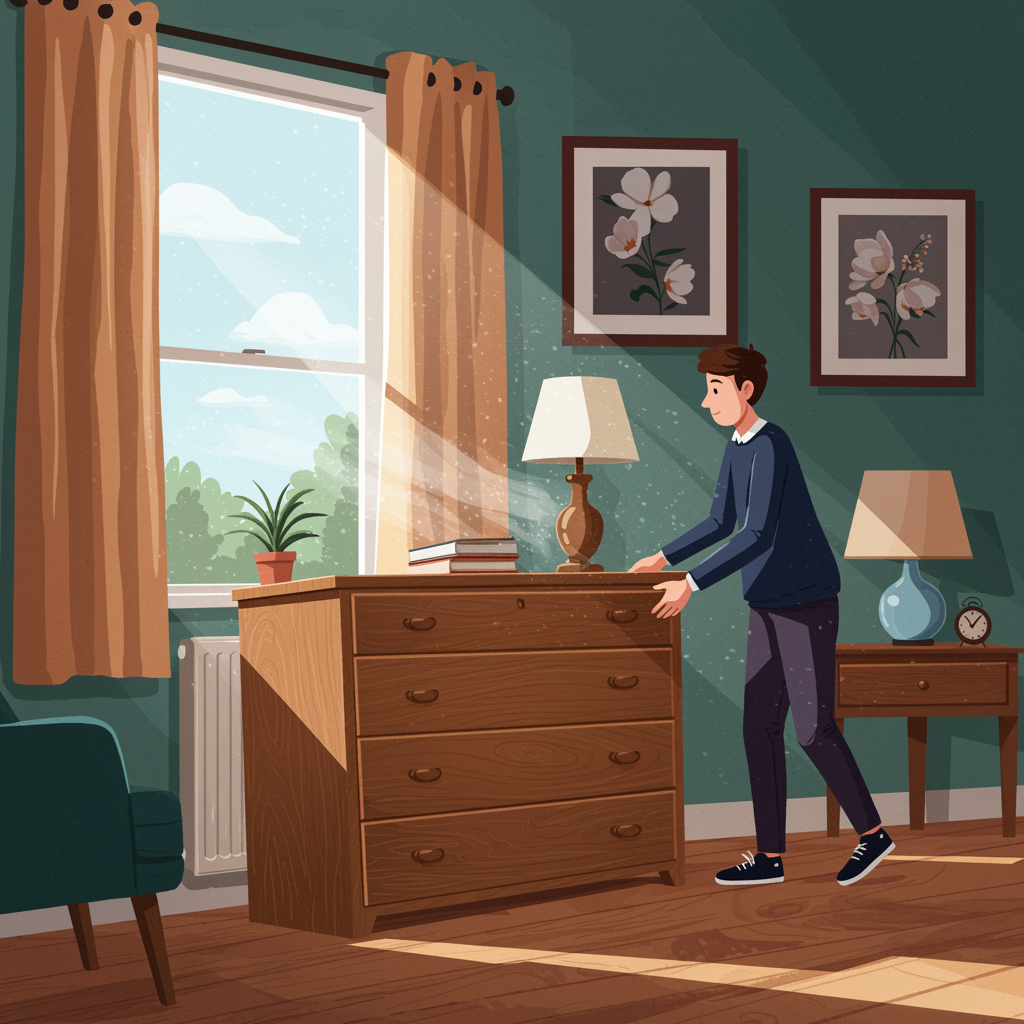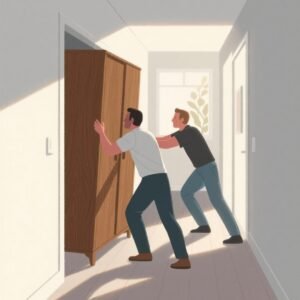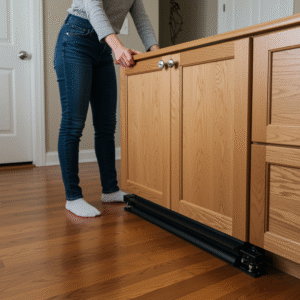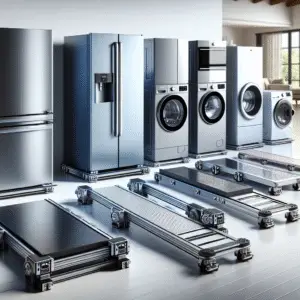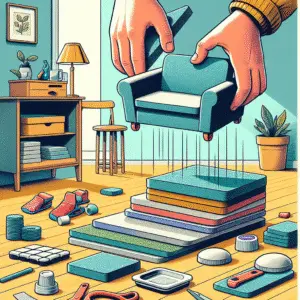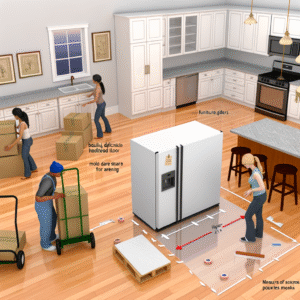Furniture Sliders and Laminate Flooring
Can Furniture Sliders Damage Laminate Flooring? The Complete Guide to Safe Moving
Protect Your Investment While Moving Furniture
Laminate flooring is a popular choice for homeowners, offering beauty and durability at an affordable price. However, moving heavy furniture across it can be risky without proper precautions. Understanding how furniture sliders interact with laminate flooring is crucial to preventing costly damage during moves, renovations, or simple rearrangements.
1Understanding Laminate Flooring Vulnerabilities
Surface Composition
Laminate flooring consists of multiple layers, including a photographic layer protected by a clear wear layer. This top layer, while durable, can be scratched or gouged by improper moving techniques or wrong slider materials. Understanding this composition helps in selecting appropriate furniture sliders that won’t compromise the protective coating.
Common Damage Points
The most vulnerable areas of laminate flooring include the seams between planks, edges near walls, and high-traffic zones. These areas are particularly susceptible to damage from dragging furniture or using inappropriate sliders that can catch on edges or create excessive pressure points.
Impact of Weight Distribution
Heavy furniture creates significant pressure points on laminate flooring. Without proper weight distribution through quality sliders, this pressure can cause indentations, cracks, or separation at the seams. The key is using sliders that effectively spread the weight across a larger surface area.
Types of Furniture Sliders and Their Impact
Felt Sliders
Felt sliders are the safest option for laminate flooring. They provide a soft, cushioned surface that glides smoothly without scratching. High-quality felt sliders compress slightly under weight, creating better surface contact and reducing the risk of damage. They’re ideal for frequently moved furniture and work best on clean, debris-free floors.
Plastic Sliders
Hard plastic sliders can be risky on laminate flooring. While they reduce friction effectively, they may scratch the surface if debris gets trapped underneath. Some plastic sliders have sharp edges that can catch on seams or create gouges. If using plastic sliders, ensure they have smooth, rounded edges and clean them frequently.
Rubber Sliders
Rubber sliders offer good grip and cushioning but may leave marks on laminate flooring, especially if left in place for extended periods. They work well for temporary moves but aren’t ideal for permanent furniture placement. The rubber material can also collect dust and debris, potentially causing scratches when moved.
Best Practices for Using Furniture Sliders on Laminate
- Clean the floor thoroughly before placing sliders to remove any debris
- Check slider condition regularly and replace worn or damaged ones
- Lift furniture slightly when placing sliders to avoid dragging
- Use appropriately sized sliders for furniture weight and dimensions
- Move furniture slowly and steadily to maintain control
- Have helpers guide furniture to prevent tipping or sudden movements
- Remove sliders after moving and clean the floor area
2Selecting the Right Sliders for Your Laminate
Weight Considerations
Choose sliders rated for your furniture’s weight. Lightweight chairs may only need small felt pads, while heavy sofas or entertainment centers require larger, heavy-duty sliders. Using undersized sliders can cause them to compress too much, potentially damaging the laminate surface through excessive pressure concentration.
Size and Coverage
Larger sliders distribute weight more effectively, reducing pressure per square inch on your laminate flooring. For heavy items, use sliders that cover the entire furniture leg base or even extend slightly beyond it. This prevents edge pressure that could indent or crack the laminate.
Quality Indicators
High-quality sliders feature thick, dense felt or cushioning material, strong adhesive backing, and smooth, finished edges. Avoid cheap sliders with thin materials or rough edges that might separate during use. Investing in quality sliders is far less expensive than repairing damaged laminate flooring.
For extra protection on expensive laminate flooring, use furniture sliders with a foam or rubber backing topped with felt. This dual-layer approach provides superior cushioning and weight distribution while maintaining smooth movement. Always keep spare sliders on hand for quick replacements when wear is detected.
Slider Mistakes That Damage Laminate
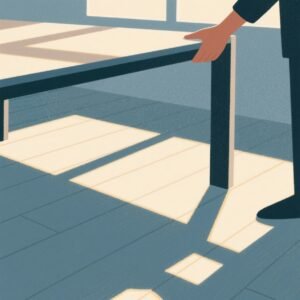 Using Metal Sliders: Never use metal sliders on laminate as they will almost certainly cause scratches and gouges.
Using Metal Sliders: Never use metal sliders on laminate as they will almost certainly cause scratches and gouges.- Ignoring Debris: Moving furniture over dirt, sand, or small objects trapped under sliders creates deep scratches.
- Dragging Without Sliders: Never attempt to drag heavy furniture directly on laminate without protection.
- Using Worn Sliders: Continuing to use sliders with worn-through felt or damaged surfaces risks floor damage.
- Improper Placement: Placing sliders off-center can cause furniture to tip, potentially gouging the floor.
- Excessive Speed: Moving furniture too quickly reduces control and increases damage risk.
3Alternative Protection Methods
Furniture Dollies
For extremely heavy items, furniture dollies provide superior protection compared to sliders alone. They completely lift furniture off the floor, eliminating direct contact. Use dollies with rubber wheels to prevent marking, and place protective mats along the moving path for added security.
Moving Blankets
Placing moving blankets under furniture before adding sliders provides an extra protective layer. This method works particularly well for short-distance moves within a room. The blanket absorbs impacts and prevents any slider material from directly contacting the laminate surface.
Professional Moving Equipment
For valuable laminate flooring or particularly heavy furniture, consider renting professional moving equipment. Furniture straps, shoulder dollies, and specialized moving systems can help lift and move items without floor contact. This investment often costs less than potential repair expenses.
Signs Your Sliders May Be Damaging Your Floor
- Visible scratches or scuff marks along furniture movement paths
- Dull or worn areas where furniture frequently moves
- Clicking or catching sensations when moving furniture
- Black marks or residue left behind after moving
- Separation or lifting at plank seams
- Indentations that don’t spring back after furniture removal
Protect Your Laminate Flooring Investment
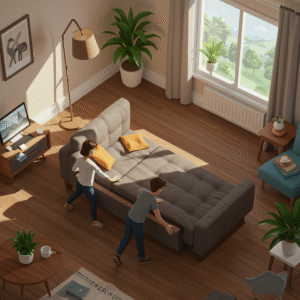 Quality furniture sliders, when properly selected and used, actually protect laminate flooring rather than damage it. The key lies in choosing the right type of slider for your specific flooring and furniture, maintaining them properly, and following best practices for furniture movement.
Quality furniture sliders, when properly selected and used, actually protect laminate flooring rather than damage it. The key lies in choosing the right type of slider for your specific flooring and furniture, maintaining them properly, and following best practices for furniture movement.
Remember that the small investment in high-quality felt sliders and proper moving techniques far outweighs the cost and hassle of repairing damaged laminate flooring. Take time to assess your furniture’s weight, choose appropriately sized sliders, and always prioritize your floor’s protection during any move.
Ready to move? Visit HelpYourselfMoving.com for professional-grade furniture sliders and expert moving advice. Protect your beautiful laminate flooring while making your move easier and safer. Your floors will thank you!

